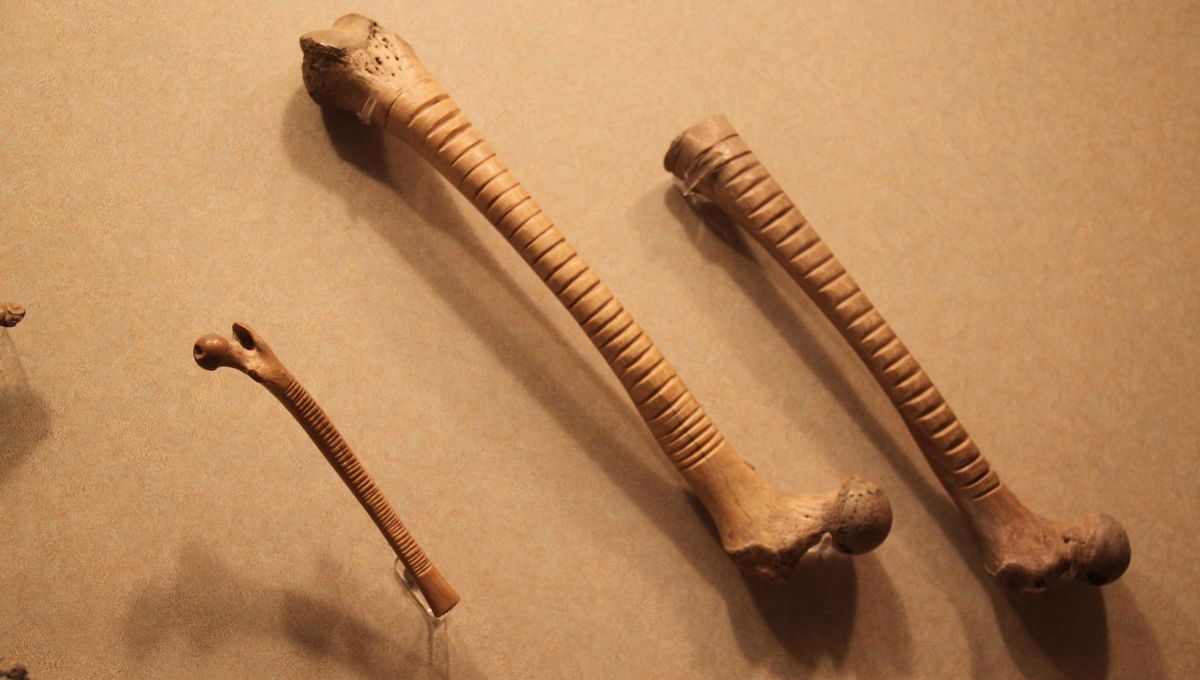
An unknown tribe of ancient hunter-gatherers that lived on the south Texas coast may have made music using modified human bones. After sifting through bone artifacts in a museum collection, the author of a new study identified a musical rasp fashioned from a humerus, resembling a macabre instrument called an omichicahuaztli that was used by pre-Hispanic Mexican cultures such as the Aztecs.
Dr Matthew Taylor from Augusta University set out to analyze and classify a series of relics made from human bone that had previously been discovered at prehistoric sites in south Texas. In total, he studied 29 such objects, all dated to the Late Prehistoric period, which in North America lasted until the 16th century CE.
“Late Prehistoric South Texas (1300–1528 AD) was characterized by hunter-gatherer habitation,” writes Taylor. “Forager peoples lived in the region from Paleoindian times up to and beyond European contact and never adopted agriculture.”
Overall, 27 of the human bone artifacts recovered from this period were made from arm or leg bones, with the other two fashioned from ribs. In general, the osseous relics were produced using a “groove-and-snap technique”, which involves sawing all the way around a bone’s circumference until the medullary cavity is reached, at which point the bone can be cleanly snapped in two.
“This process is labor intensive and represents hours of work,” writes Taylor, highlighting the level of care that went into producing these skeletal curiosities. Typically, items made of human bone are interpreted as evidence of ancestor worship or war trophies, although Taylor says there’s little evidence for these practices in South Texas.
For instance, he mentions that while enemies’ scalps may have been taken and kept by pre-Hispanic warriors, there’s no archaeological record of human bone war trophies in the region. Likewise, while certain ancient cultures in Central and South America are known to have dug up and modified their ancestors’ corpses as a form of veneration, this does not appear to have been the case in North America.
One exception to this comes from a report by the Spanish conquistador Alvar Nuñez Cabeza de Vaca, who described how native Texans ground up and drank the cremated bones of certain holy men. “This is technically a form of cannibalism but could be considered a type of ancestor worship as well,” explains Taylor.
Returning to the collection, the author highlights the presence of a musical rasp made from a human upper arm bone with 29 notches etched into its surface. Presumably, the instrument would have been played by scraping another piece along these grooves.
The other side of the bone rasp features zig-zagging geometric patterns, which act as decoration.
According to Taylor, such items are unknown from South Texas yet are referenced in numerous ethnohistoric accounts from the highlands of central Mexico. Known as omichicahuaztli in the Nahua language, these Mexican instruments share many similarities with the newly reported Texan example, often featuring geometric designs.
However, while the item described by Taylor is made from a humerus, Mexican rasps are almost always manufactured using human thigh bones. Based on these differences, the study author proposes that the Texan rasp “may represent an emulation of Mexican religious practices.” This, in turn, hints at an exchange of technology and culture between the Aztec empire and the Indigenous tribes occupying the south Texas coast during the Late Prehistoric period.
Returning to the wider theme of human bone modification, Taylor says that the region’s ancient inhabitants clearly “did not regard the handling of human remains as taboo.” However, he concludes that “although some may wish to equate the presence of these artifacts with the existence of cannibalism, this report does not support or refute that hypothesis.”
The study has been published in the International Journal of Osteoarchaeology.
Source Link: Unknown Tribe Of Ancient Hunter-Gatherers In Texas Made Music Using Human Bones